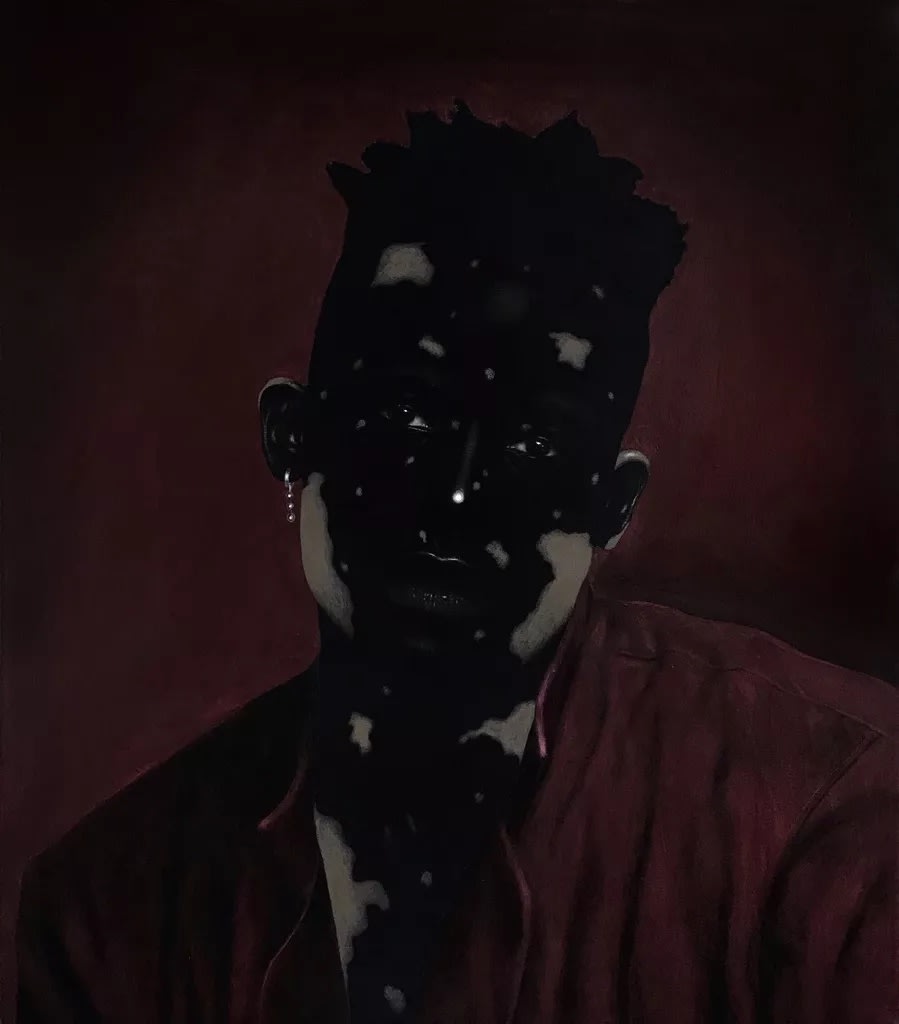Johnson Eziefula’s Enthralling Portraits Explore the Complexities of Cultural Exchange
Artsy
By Daria Harper for Artsy
The 23-year-old Nigerian artist Johnson Eziefula depicts young Black figures with an effortlessly impermeable and poised aura, and slowly reveals parts of their stories and identities in elements within his paintings. The painter’s works tend to reflect his belief that individuals today are constantly, and often subconsciously, shaped and molded by cultural exchange on a global scale. Eziefula is particularly interested in the concept of cultural identities as hybrids—also understood as the blending of multiple identities, often as a result of globalization. Working with a range of materials, Eziefula analyzes the deep complexities of migration, technology, and Westernization in an increasingly connected society.
A self-taught artist, Eziefula renders his figures with painstaking and precise detail. His paintings blend hyperrealism with elements of the Contemporealism art movement popularized by artists such as
Eziefula’s latest works are currently on view during Miami Art Week: Ross-Sutton Gallery, which represents the artist, is exhibiting Gone Girl (2021) in “BLACK EXCELLENCE - BLACK ELEGANCE”; and Artsy’s Trove exhibition is presenting Just as green in Atlanta (2021) at the AmEx Platinum Studio in the Miami Beach EDITION.
Just as green in Atlanta builds on the idea of multifaceted cultural identities. The painting shows a figure sitting in front of a crisp white window that opens out to a veil of luscious green trees. It tells the story of a young man who immigrated from Nigeria to Atlanta, Georgia, eager to experience familiar aspects from his home country in this new environment. Eziefula explained that the painting explores notions of belonging and citizenship, even though nothing directly points to the figure’s location or nationality at first glance.
“With this work, my intention is to prove that, as far and distant as our home may seem, it’s still our home,” Eziefula told Artsy in a recent interview.
The subject’s clothing in the aforementioned artwork is integral to understanding his journey. He wears a bandana around his head, a yellow tank top, and denim pants. According to Eziefula, these fashion choices are intentional references to popular fashion trends over the past several decades, especially those seen in hip-hop culture in the American South.
Eziefula frequently examines the role of style and presentation throughout his work, especially the influence of Western fashion on West African youth, including those in his hometown. The artist’s use of material—namely African wax print, or “ankara,” as it’s called throughout West Africa—sparks further conversations surrounding trade and the lasting impact of colonization around the globe. Although the fabric is widely regarded as distinctly African, it is actually of Dutch Indonesian origin.
Looking ahead to 2022 and beyond, Eziefula shared that he will continue interrogating notions of citizenship and regionality in his work. “It’s an attempt to dissolve borders,” he said, referring to his artistic practice. “Earth is home to humans, regardlessof the part of the Earth.”
3.12.2021

